
Next stop on our search for lost worlds is a walled fortress older than the Inca Empire. When I explored bygone worlds for my second novella, Man’s Best, I discovered Kuélap.
I’d heard of popular ancient cultures such as ancient Egypt, the Greek Empire, the Roman Empire, and the Megalithic and Mayan civilizations, but I’d never heard of Kuélap. Cloaked in mystery, this lost world is proof of an advanced civilization. And perhaps something or someone other than earthbound humans guided the advancement of this once mighty people and their way of life.
Location
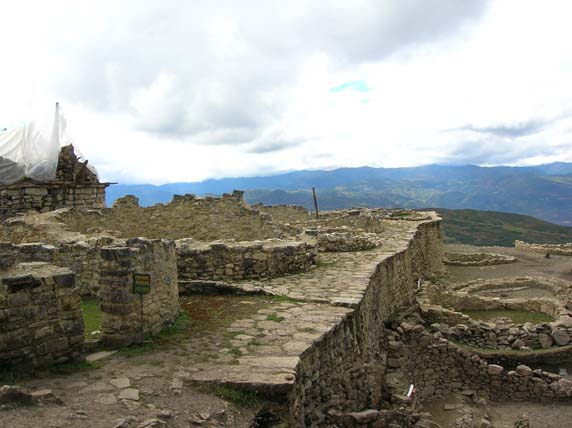
Kuélap perches atop mountain cliffs on the slopes of the Andes, in northern Peru, and overlooks the Utcubamba Valley.
It is about 9,843 feet (3000 meters) above sea level. Only the massive ruins of this once great city remain. These ruins, which span over 1,968.5 feet (600 meters), reveal an advanced culture of people who challenged the laws of gravity.
Warriors of the Clouds
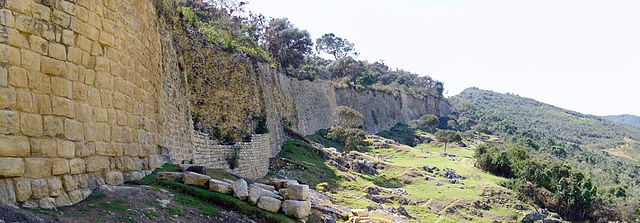
Chachapoyas built Kuélap between 500 and 800 AD. This was 600 to 900 years prior to the creation of the Inca built Machu Picchu.
Historians refer to the Chachapoyas as the Warriors of the Clouds. Radiocarbon dating of the ruins reveals construction of the fortress began in the 6th century AD. These cloud warriors inhabited Kuélap until the Early Colonial period (1532-1570). (The Cloud People and People of the Clouds are also names used regarding this culture of Andean people.)
Kuélap Discovered
Juan Crisóstomo Nieto, a Chachapoyas judge, brought the Kuélap Fortress to the attention of the world in the 1840s. He accidentally discovered this lost city while working on a case over a land dispute. Local villagers — who had known of the site for generations — guided Nieto to the ruins. He drew a survey of the area and wrote notes on the size of Kuélap. It is a primary example of Chachapoyan architecture.
Even though Kuélap is considered the largest ancient ruins of the Americas — covering 25,00 square miles in its original state — the World Monument Watch did not place Kuélap on its list until 2004. Being placed on the list was necessary to call attention to its deterioration.
Archaeologist consider Kuélap a fortress because towering walls, made of large limestone blocks, protected it (and kept its secrets from the world). The blocks loomed over 60 feet (19 meters) tall and surrounded 400 round buildings.
Originally, archeologists thought these ancient people built Kuélap the way they did to protect them from invaders. Now, however, some think this citadel may have been more for than just a military structure. Some buildings appear to be for religious and civil services.
ProbeFiling
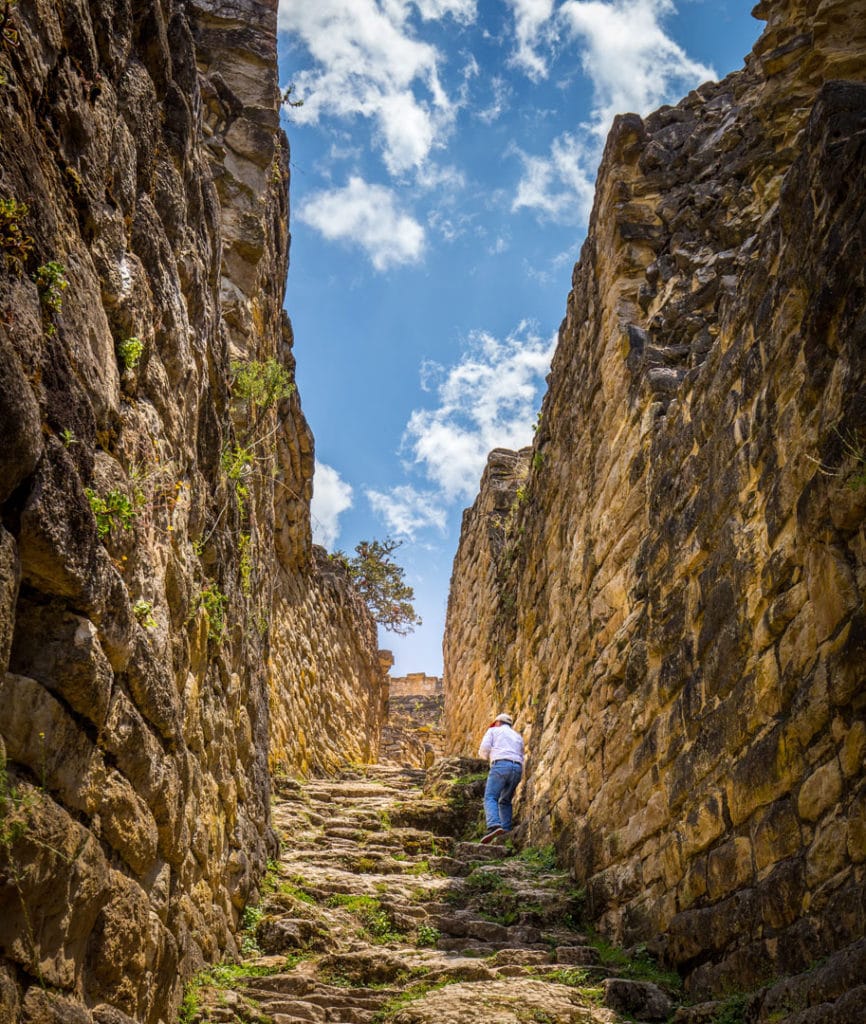
Seven Kuélapan Facts:
-
- Until recently, only 20% of the area had been excavated
- The volume of stones used to build the Kuélap site is three times the volume of the ancient Egyptian pyramid Kheops.
- There are three entries into the city. Entry # 1 is being restored and is closed to the public. Entry #2 was used by the women who carried water and by the villagers returning from the fields. Entry #3 was used for food and water deliveries during Kuélap’s glory days (this entry is open to the public).
- About eight people lived in each house. In the houses, traces of large grinding stones were found. A place to make fire was located and archaeologists believe the kitchen was adjacent. At least two or three graves were found as well.
-
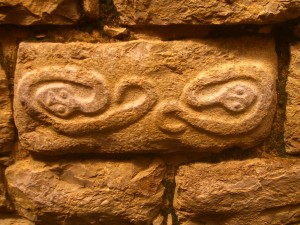
Artwork carved into stone. The most important people’s houses were decorated with rhomboidal (an oblique-angled parallelogram with only the opposite sides equal) or zigzag friezes ( a decorative band on an outside wall) to represent the deities of Chachapoya: feline, snake or condor.
- Chachapoya people burned their house after the death of the head of the family and rebuilt again on top of that.
-
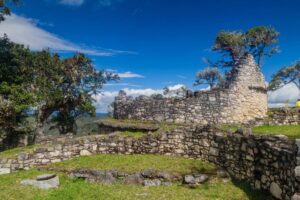
The Tintero or Inkwell of Kuelap. A monument, Tintero (meaning Inkwell), in the shape of an inverted cylinder, is located to the south and behind Entry #1. Inside, excavation unearthed human remains. It is believed to be a highly religious place and possibly used for human sacrifice. These bones date back to before Christ. This means Kuélap has been inhabited longer than anyone previously thought.
Most Perplexing
The sheer magnitude of the structure gives a person a reason to stop and ask: How? The advanced engineering — not only of the fortress itself but also the highly sophisticated rainwater drainage system — indicate the Kuélapans accomplished feats beyond what archeologists once thought possible in Earth’s history.
How did a people, who some consider less advanced, build such a fortress atop a mountain and transport hefty blocks of stone to build their walls and buildings? It’s a mystery that remains unsolved, like so many of the enigmas that restrict our studies of ancient civilizations.
Even More Perplexing
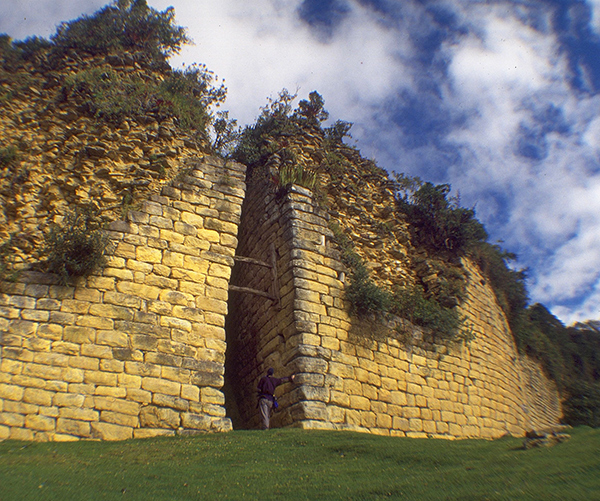
What is even more perplexing is the entrance to the citadel. This entry is a pie-shaped alleyway almost 197 feet (60 meters) long that grows narrower the closer to the city an interloper advances. It becomes so narrow that only one person at a time can make it through. Archeologists reason this is a highly refined military strategy devised to protect the Cloud People from invading forces.
The corpses of humans of all ages — children, youth, adults, the elderly — were found inside and outside the houses. Archaeologists believe because these bodies were not buried according to funerary rituals, a massacre transpired in Kuélap.
In addition, these Kuelapans were killed by stones to the skull. According to anthropologist, Alfredo Narváez, it was not the work of the Incas or the Spaniards. He drew this conclusion because there are no signs of swords or weapons bearing the arms of the conquerors.
Who did they need protection from? Some suggest the Wari, who were a people that thrived around 500 AD to 1,000 AD, in the south central Andes and coastal area of Peru. But no one knows for sure.
Parallels Between Lost Worlds
Drawing parallels between the Kuélapans and the Mayans, one finds similarities, both:
-
- vanished, and no one is for sure how or why.
- show evidence of being an advanced, sophisticated society.
- built impressive stone cities and monuments that have stood the test of time and intrigued explorers and scholars.
- civilizations are as much a mystery as their disappearances.
Fair Skinned and Beautiful
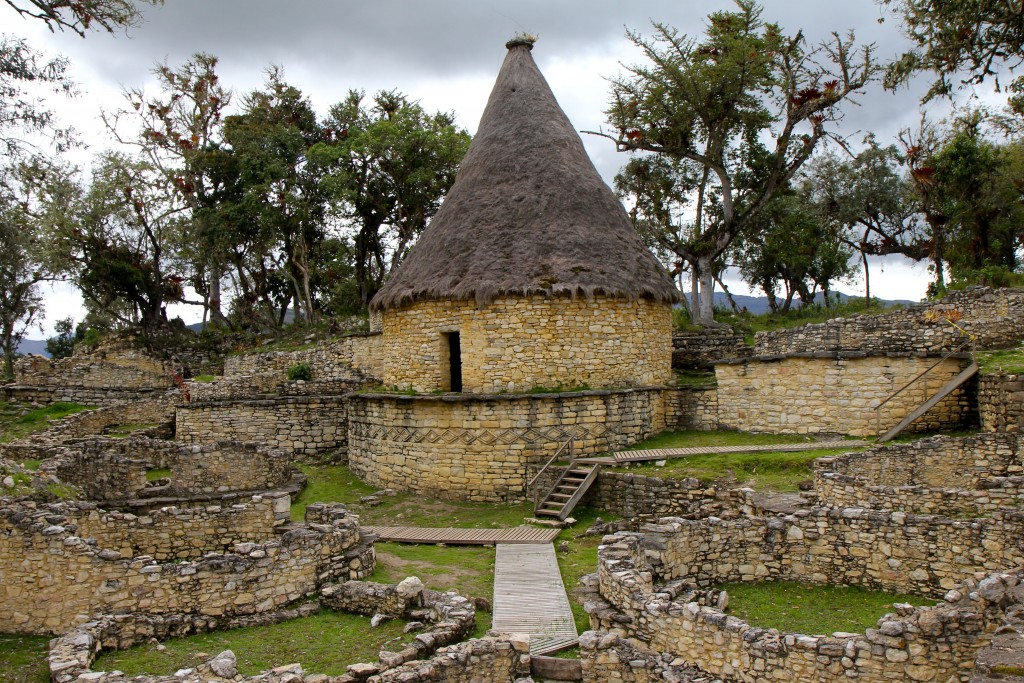
As stated earlier, Juan Crisóstomo Nieto , a Peruvian judge, discovered Kuélap much earlier than the much sought after tourist destination of Machu Picchu. Nevertheless, we know more about other cultures than we do the Kuélapans, why?
Could be that Kuélap is not as easy to travel to as other ruins in South America, but this is pure speculation as is much of the information regarding this mysterious lost people. But if it’s too hard for modern man to travel, how did an ancient people accomplish the construction of such an advanced city?
I noted the Kuélapans link to the culture of the Chachapoyas. Pedro Cieza de León, a Spanish conquistador and chronicler, described the Chachapoyas as being fair-skinned and beautiful. He wrote:
They are the whitest and most handsome of all the people that I have seen in Indies, and their wives were so beautiful that because of their gentleness, many of them deserved to be the Incas’ wives and to also be taken to the Sun Temple.
This description led many to conclude that the Chachapoya were blond haired and European in appearance.
If speculations are true — and the Cloud People of Kuélap were part of Chachapoya culture — then conceivably they too were fair-skinned and European looking, which is a mystery in itself.
(ProbeThought: The Sun Temple (Qurikancha) was the most important temple in the Inca Empire and was dedicated to Inti, the Sun God. Perhaps Inti was an Ancient Astronaut and maybe his guidance — or other god-like space travelers — helped humans create advanced civilizations.)
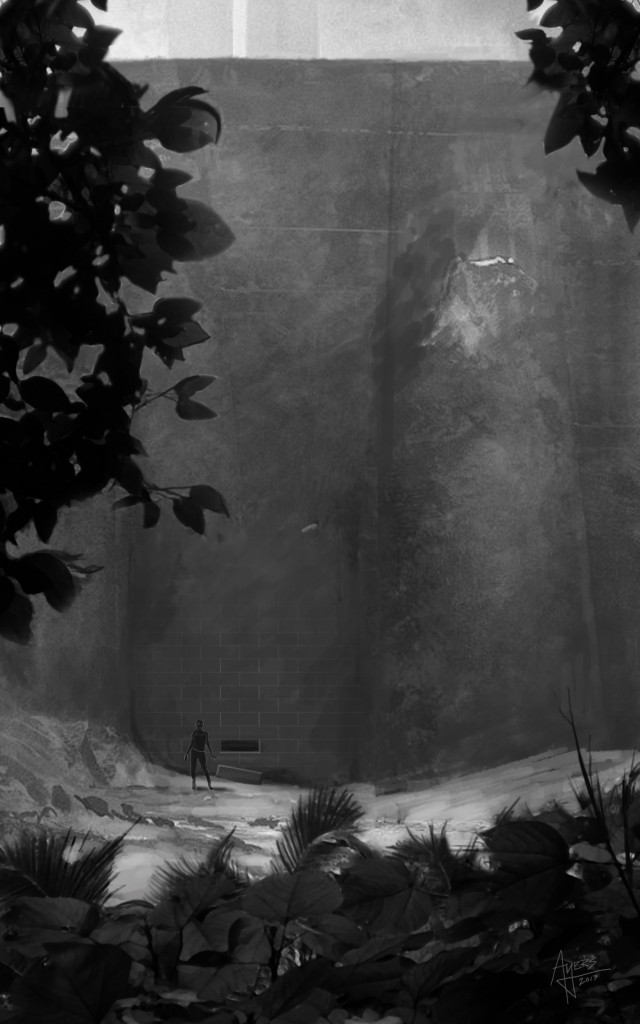
Poll
QUESTION: Do you believe there is truth to the stories of the lost continents of Atlantis and Lemuria?
375 members of the Ancient Alien community voted with much discussion following and still continuing.
Definitely 60%
Some 6%
Maybe 14%
Nope 21%
24 members of the Ancient Knowledge community voted.
Yes 58%
No 13%
Some 25%
I want to believe 4%
The Probe’s Mission Statement
The Probe is devoted to:
- the exploration of the unexplainable,
- finding the truth in occurrences that resemble science fiction,
- researching and reporting on topics that could be flung upon the wall of weird.
- Urban Legend in the Making - April 22, 2024
- Coghlan’s Traveling Coffin Urban Legend - April 4, 2024
- Richmond Vampire Urban Legend - March 7, 2024

4 replies on “The Lost World of Kuélap and Its Cloud Warriors”
Very interesting and where do you find all this strange “stuff”. It sure would be nice to have some answers to these questions.
Hi Ike,
Thank you for stopping by and commenting. I agree. Answers would be nice. We can only hope that perhaps one day we will find them.
As far as your question: Where do I find this strange “stuff”? I have to admit, it’s uncanny. I feel as if I’m being guided all along on my journey. Just like connecting with you and learning more than I thought possible about religion. I am guided and feel a presence taking my hand and leading me on a path to enlightenment.
When the pandemic is over, let’s go there and “feel the energy” for ourselves! I could use some travel! Such an interesting article… and I love your bio!
Let’s go for sure! Kuelap is definitely on my bucket list. I was so inspired to visit this ancient city after the research I did for Man’s Best. Thank you for your comment and your positive words. So glad you found it interesting!